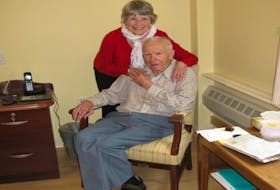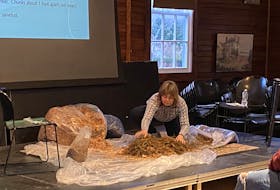Years ago, I was visiting a friend who had a pet rat. I am not fond of these creatures, but I do respect how intelligent they are. Unbeknownst to me, this rat was exceptionally clever. So clever, it knew how to escape its cage.

You know where this is going. Clever rat decided that the visitor (me!) was an excellent hiding place. Cue the screams and the panicked gestures.
My friend, though, was initially reluctant to rescue the rat as it was running around inside my sweater. Removal of the rat would require my friend to put her hands on my body.
Eventually, both of us cast boundaries aside and the rat’s removal was accomplished. Not before I acquired a lifelong horror of anything rodent-like with a tail.
The squeamishness we both felt for the breach of bodily autonomy came back to mind when I read a report of a study discussed recently at an American Heart Association meeting.
The CBC reported the study found “women were less likely to get CPR from a bystander than men and more likely to die.” The reason: people are reluctant to touch a woman’s chest to perform CPR.
Now I don’t know about you, but like my adventure with the rat, if I were to experience a heart attack, I would prefer people set aside their reluctance to breach personal boundaries and immediately get to work to fix the situation.
The stats are sobering: only 39 per cent of women having a heart attack in public spaces received CPR, while 45 per cent of men did; of those men, 23 per cent were more likely to survive.
The researchers speculate bystanders are concerned about the force required to perform CPR and the belief they need to adjust or remove clothing. The fear of touching a woman’s breast is unfounded, as CPR requires you to push on the sternum or the space between the breasts.
“This is not a time to be squeamish because it’s a life and death situation,” said Dr. Benjamin Abella, one of the researchers at the University of Pennsylvania who carried out the study.
The statistics quoted say more than 350,000 Americans a year experience a problem with their heart rhythm in settings other than hospitals. Without intervention through CPR, 90 per cent will die; CPR can double or triple the odds for survival.
The stats are sobering: only 39 per cent of women having a heart attack in public spaces received CPR, while 45 per cent of men did; of those men, 23 per cent were more likely to survive.
Lest you think there was researcher bias in this assessment of bystander discomfort, researchers found no gender difference when people experienced cardiac problems at home, because the people knew the person requiring assistance.
What this means practically is a change in how we train people to deliver CPR, including the kinds of mannequins used (they are often male torsos) for practice.
Knowing that people are reluctant to work on women will help improve outcomes should a cardiac issue strike a woman in a public place. Already health professionals are thinking about other ways women may need to be treated differently: one researcher is looking at how breasts may affect the proper placement of defibrillator pads.
There’s been ample research showing that women’s experience of heart attacks is quite different from men’s. While Canadian men are twice as likely to have a heart attack than women, men are diagnosed earlier than women (55-64 versus 65-74 years of age).
How men and women experience heart attacks is also different. Both men and women will feel chest pain; however, women usually do not have intense pain in the left arm for example. Instead, they are more likely to feel pain in their jaw, along with nausea and shortness of breath.
We need to look at the diagnosis and treatment of women, both in public as well as in health settings, because cardiac disease is the No. 1 cause of death in the U.S. and Canada for women.
And while we are at it, let’s learn more about how we can intervene when someone falls ill, male or female, especially when we are in public spaces.
Martha Muzychka is a writer and consultant. She has worked with the Canadian Heart and Stroke Foundation in the past and has a personal interest in the issue of heart disease.








